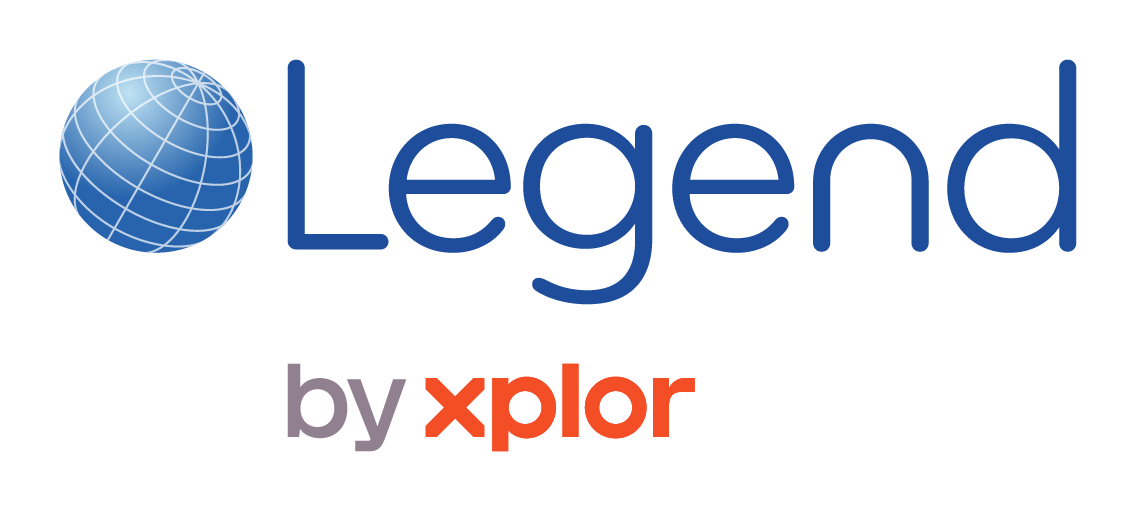Starting Out Strong: Onboarding & Inductions
How do you welcome new members when they join? Do you offer inductions? Do your members really want to attend an induction? This article discusses these questions and more to help your leisure organisation create inductions and onboarding experiences that turn new members into loyal ones.
The start of a new member’s journey with your leisure centre is particularly important. Especially with many members now signing up digitally.
Successful onboarding will set a new member up for success. Motivating them to visit and use their membership regularly. And creating a strong relationship between your staff and your member – encouraging open, honest dialogue.
An induction should be a valuable part of your leisure member onboarding process. It should welcome new members into your leisure centre and give them key ingredients for success.
How well are inductions working? Research suggests inductions help members stay longer. But there are improvements to be made if inductions are to truly be a valuable exercise for your members and your staff.
In this article, we will explore the value of inductions in detail and how you can create comprehensive onboarding journeys that boost retention rates.
How valuable are inductions?
Xplor’s recent leisure member attrition research analysed trends from over 700,000 leisure, health club, and gym members in the UK and Ireland – including over 300,000 with cancelled memberships.
This research also looked at inductions and the potential impact on attrition. It found that 77.3% of those with a cancelled membership had been marked as having had an induction of some type. Whereas only 72.6% of current members have had an induction.
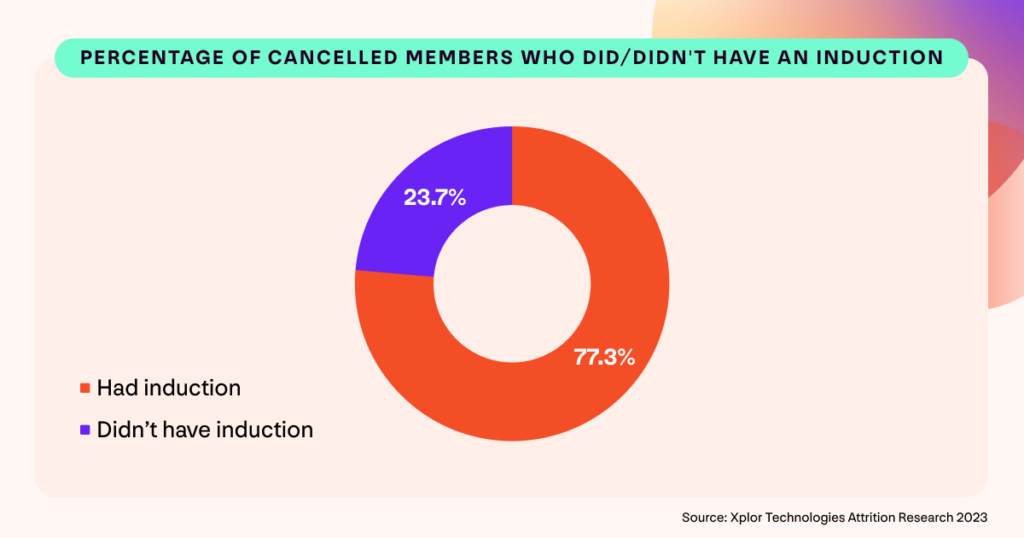
It is surprising to observe that a slightly higher percentage of former leisure members had an induction than current members. However, the research did find that inductions did have some positive impacts on former members who had one.
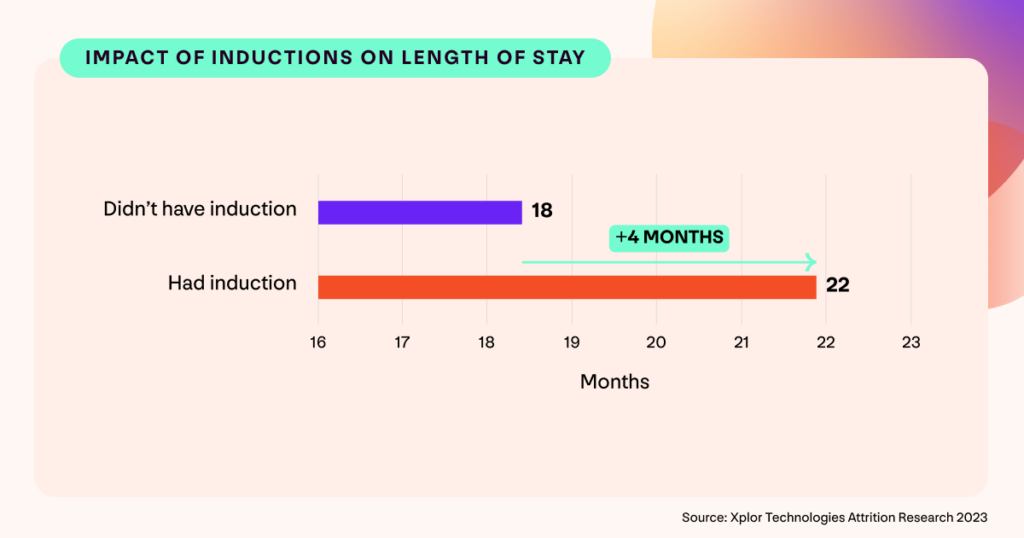
If a former leisure member had an induction, on average they kept visiting and using their membership for 4 months more than former members who did not have an induction.
Additionally, the research found that former leisure members who had an induction were less likely to cancel due to lack of use, time, or interest and for cost or financial reasons.
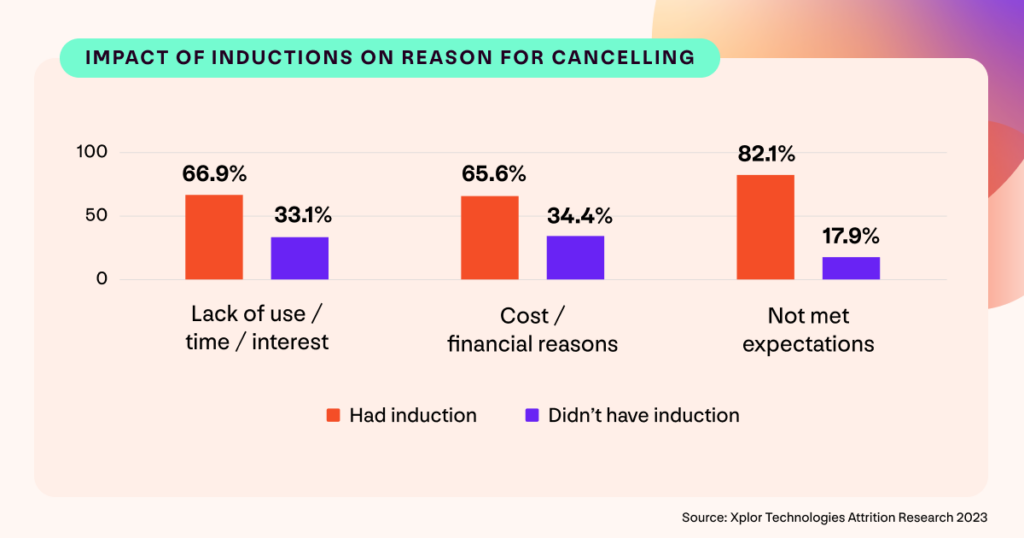
Therefore, this suggests that an induction helps a new member get into the habit of visiting and using their membership on a regular basis. And equips them with the tools to keep this habit up for longer.
Given that fewer cancel for cost or financial reasons, it also seems that an induction helps new members look beyond price to understand the value of their membership.
On the other hand, 82.1% of those who cancelled as their expectations had not been met had had an induction. Pair this with the overall high percentage of former members who had an induction, and it is time to reposition and rebrand inductions.
Repositioning & rebranding inductions
“A good induction appointment ensures your new member makes at least one visit. And encourages them to make one more.
Equally valuable for new exercisers, as returning members, it needs selling to all new, and lapsed members to help them get into the habit. And feel comfortable, confident, and motivated.
An induction is not for health and safety (otherwise it would be mandatory). It helps your members to stay longer, if delivered properly, as a first point of interaction between member and staff.”
Guy Griffiths, GGFit
Especially in the leisure sector, an induction has become a tick box exercise. As a result, many past and present leisure centre and health club members may have had a disappointing induction.
So, more needs to be done to reposition inductions into a session that new members of all experiences and backgrounds want to take part in. A new name can be an ideal starting point – for example, calling it a welcome session may challenge initial member uncertainties.
Ideally, your welcome sessions should be personalised to the needs of each individual member as much as practical. For bigger operators, that may mean several types of session based on member demographics, fitness levels, goals, etc.
The session should leave new members feeling empowered and motivated to get the most out of their investment in a membership with your leisure organisation.
“Every team member should experience a welcome session. This will make it easier for them share their experience to reassure those new to exercise and sell the benefits to experienced exercisers.”
Julie Allen, Active Insight
Each member of your leisure teams should know the value of all new and returning leisure members attending a welcome session. Staff members should be able to confidently explain the benefits to the member.
To really set new leisure members up for success, your welcome session should be a part of a longer onboarding process. That process should be automatically tailored to each new member. And the focus should be on encouraging the member to make their next visit.
Mastering the art of onboarding to cut attrition
Your new leisure member onboarding process will be most successful and have the biggest impact on retention when you design it with your leisure organisation in mind.
The Winning The War On Attrition report contains expert insights to help you master the art of onboarding new leisure members. And it features insights and tactical takeaways that will help you understand and cut attrition in 2024 and beyond.
Download your complimentary copy of the report.
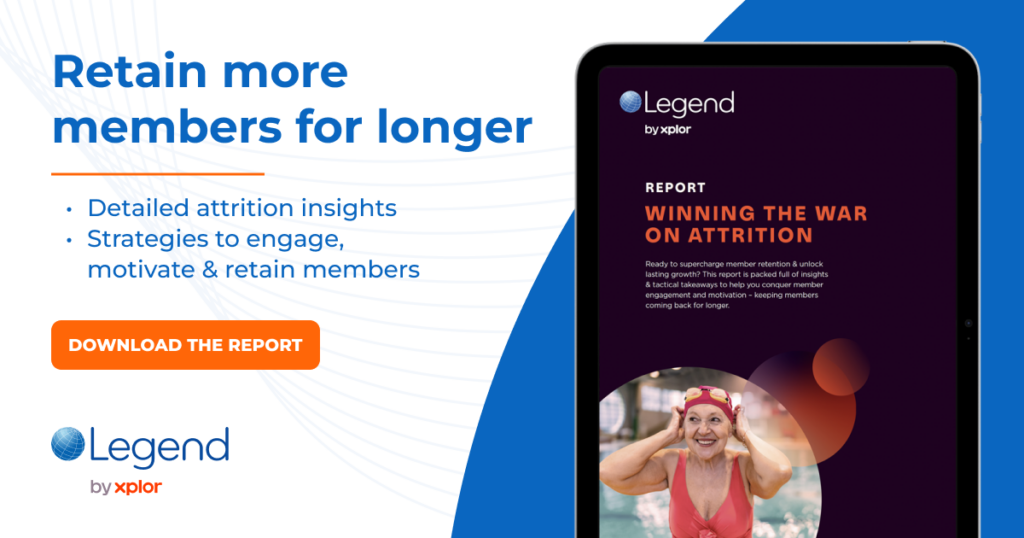
* About the research:
The attrition insights featured in this article and the Winning The War On Attrition report are based on Xplor data from 714,674 leisure, health club and gym members paying by Direct Debit in the UK & Ireland.
As well as current members, it includes data on members who held a membership that has been cancelled between January 2017 and April 2023.
The data was collected in May 2023.
